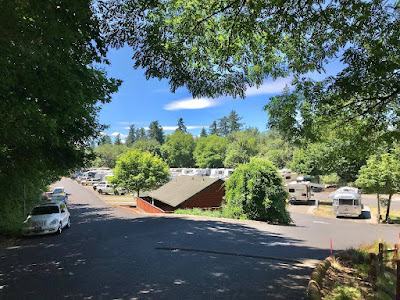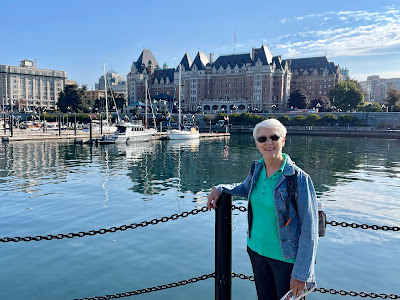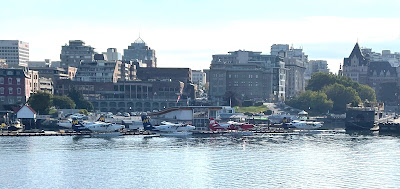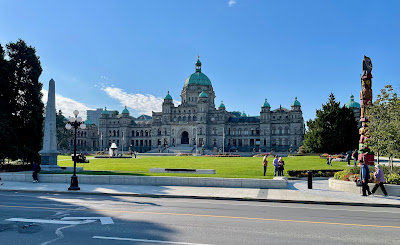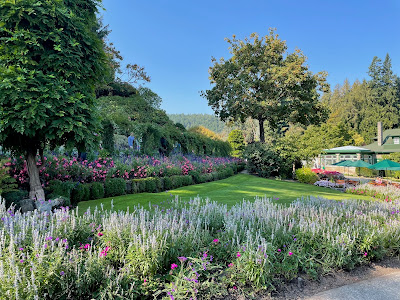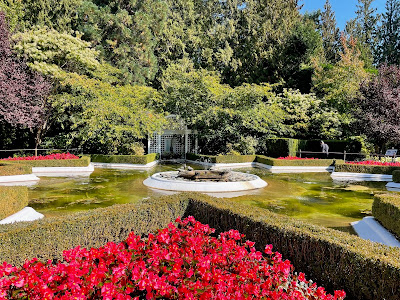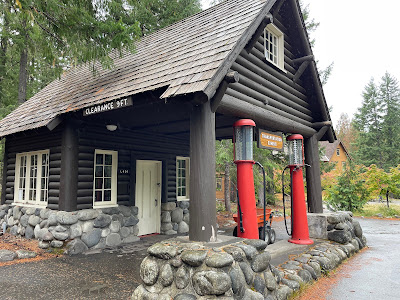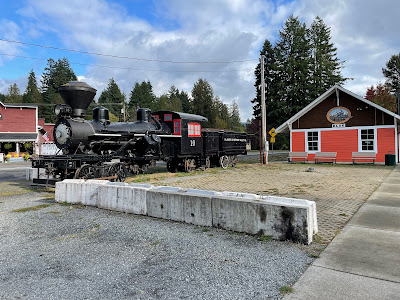Today was the second day for seeing some sights around the Portland area. We took a tour through Wildwood Adventures up the Columbia River Gorge to Hood River and returned via parallel roads to Portland. Today was also our first experience with Uber rides.
We met the first Uber driver at the campground. He took us to the downtown area where we’d meet the van for the tour. Another person was also there waiting for the same van. He was originally from India but was working for Aramco in Saudia Arabia. He was in the USA for a conference.
The description of the tour stated there would be several waterfalls along the scenic drive. Our turnaround point would be Hood River (below Mt. Hood), a small town that caters to tourists rather well. The return would be through the fruit-growing region of Oregon. The trip was a full-day engagement dean 7:30 AM ti 4:30 PM. Along the way, we learned a lot about the region.
The tour began with a stop at Multnomah Falls, the third highest waterfall in the 50 states. From Multnomah, we headed to Crown Vista Point House. This structure was the first purpose-built rest stop in the country. The building sits atop a point 733 feet above the Columbia River. It was built between 1916-1918 as a memorial to Oregon pioneers. It served as a comfort station for those traveling the Columbia River Highway. It also served as an observatory. The Vista House marks the beginning of a 75-mile scenic highway that was built in 1913. According to our driver, it was the first stretch of paved roadway planned as a scenic drive.
Before arriving at Hood River for lunch, we passed quite a few waterfalls. There are so many that it would take quite a while to find and explore all 100 waterfalls in the Columbia River Gorge. Each of them, of course, is unique in some way, even Horst Tail Twist Falls.
As mentioned, we had a lunch stop in Hood River, Oregon. Before being let out we were told that a favorite of people in the area was the marionberry. That being the case, we had to have a piece of marionberry pie. Fortunately, Bette’s Place had that as a menu item and had enough pieces for us. Marionberries are a cross between a raspberry and a blackberry.
From Hood River, we traveled through the Hood River Valley where pear, apple, peache, and berry orchards are plentiful as well as numerous wineries. Hood River Valley is bounded by the Columbia River to the north, Mount Hood to the south, the Cascade Range crest to the west and a ridge system to the east which contains Hood River Mountain and Snyder Canyon.
Our final stop before returning to Portland was the Timberline Lodge. The lodge is at 6000-foot elevation on the south side of Mt. Hood. Timberline Lodge was about 60 miles east of Portland. Constructed from 1936 to 1938 by the Works Progress Administration, it was built and furnished by local artisans during the Great Depression. Timberline Lodge was dedicated in 1937 by President Franklin D. Roosevelt.
Timberline Lodge is a mountain lodge on the south side of Mount Hood in Clackamas County, Oregon, about 60 miles (97 km) east of Portland. Constructed from 1936 to 1938 by the Works Progress Administration, it was built and furnished by local artisans during the Great Depression. Timberline Lodge was dedicated September 28, 1937, by President Franklin D. Roosevelt. By the way, the Mt. Hood summit peaks at 11,245 feet. The mountain peak was not in view due to the rain and fog.














